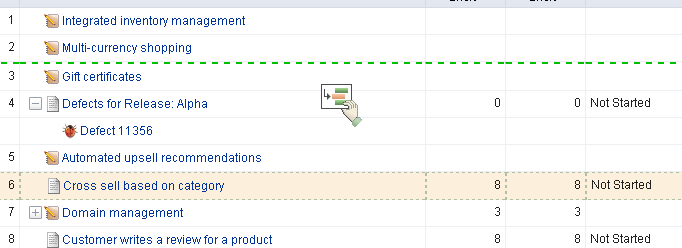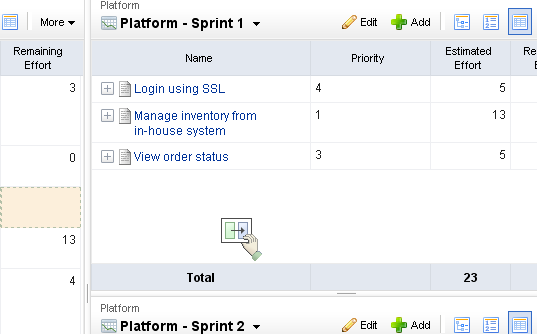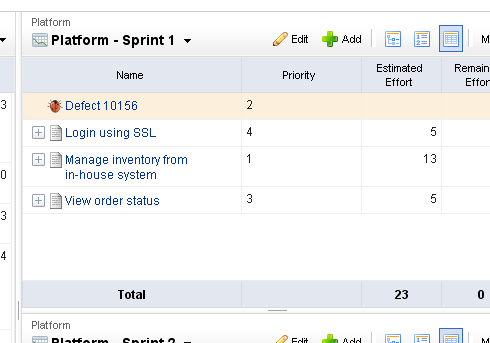Before moving your stories into sprints for execution, your backlogs should be prioritized. Prioritization (often stack-ranking) can be done at multiple planning levels. Prioritizing a release backlog requires a bit more precision than prioritizing the product backlog due to the closer delivery time-frame. Because of this, it is recommended that all prioritized release backlogs be stack-ranked in absolute order of priority. This provides clarity as to which stories should be moved into a sprint. Prioritizing a release may also require more break-down and elaboration of stories so that effort and dependencies may be factored into the prioritization. When you are in a backlog, make sure your view-mode is set to  List mode, so that you can stack-rank stories in relative priority. By default, the Backlog view will display stories in
List mode, so that you can stack-rank stories in relative priority. By default, the Backlog view will display stories in  Tree mode.
Tree mode.




